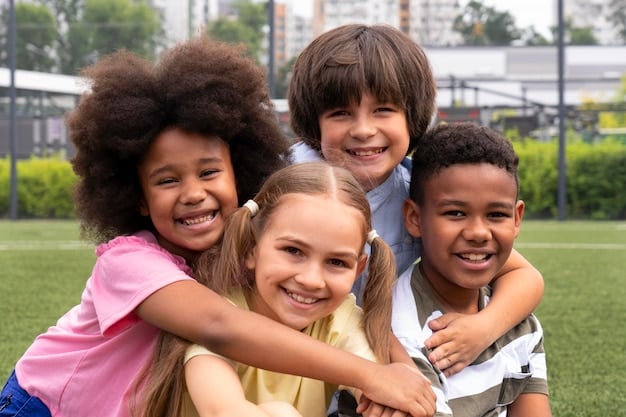Adaptations that support children's learning
 Children with disabilities, like any other child, respond positively to materials they feel cater to their needs. Components of materials and the classroom may still need adaptations depending on the need. Adaptations change how a child learns something. This entails making changes or accommodations to the environment, materials, or equipment.
Children with disabilities, like any other child, respond positively to materials they feel cater to their needs. Components of materials and the classroom may still need adaptations depending on the need. Adaptations change how a child learns something. This entails making changes or accommodations to the environment, materials, or equipment.
Examples of adaptations:
- Rearrange furniture to accommodate a wheelchair or other physical disability.
- Use a picture schedule to show the different daily activities.
- Add additional outdoor time to accommodate children who need additional gross motor practice.
- Add movement activities to storytime for children who have trouble staying focused and engaged.
- Extend the length of choice time to give children time to finish a game or painting activity.
- Make a paintbrush thicker by adding a piece of foam.
- Put silly putty around a crayon to help with grip.
- Reduce the number of steps a child is expected to follow.
Always consider the child’s interests, preferences, life experiences, culture, personality, home language, motivators, family values and traditions, skills and abilities, knowledge, needs, and family structure. Before making decisions about adaptations.
Interested in learning more ways to support all children? H&H Child Care Training Center offers several different training courses that provide strategies for modifications and accommodations.
- How to Start a Daycare and Maintain Health and Safety
- Montessori Education: A Comprehensive Overview
- Managing Behaviors in the Early Childhood Education Classroom
- Unlocking the Power of DAP
- Montessori and Special Education: Tailoring Learning to Individual Needs
- Future Leaders in Education: Michigan CDA Training
- Nature’s Classroom: Why Fall Is the Best Season for Sensory Learning Outdoors
- The ABCs of ECE: Why Childcare Education Courses Are the Ultimate Parenting Hack
- Winter Wonders: Incorporating Seasonal Science in Preschool Curriculum
- How to Make Your Circle Time More Inclusive for All Learners
- How Does Child-led Learning Elevate Winter Play?
- Planning with Purpose: The Art of Creating Inclusive ECE Classrooms 🎨
- 🧩 Early Signs of Autism in Toddlers — What to Watch For 👀
- How Can We Adapt Our Teaching Approaches to Meet Different Learning Styles in Young Children?
- 🔍 What Do You See When You Watch a Child Learn?